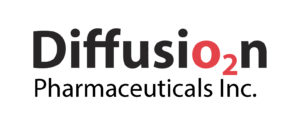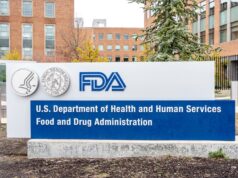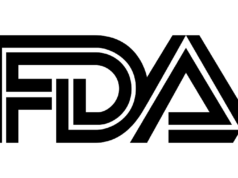 Diffusion Pharmaceuticals, a biotechnology company developing new treatments for life-threatening medical conditions by improving the body’s ability to bring oxygen to the areas where it is needed most, has announced that it has received FDA approval to enrol patients in an ambulance-based phase 2 clinical trial testing its lead drug, trans sodium crocetinate (TSC), for the treatment of acute stroke.
Diffusion Pharmaceuticals, a biotechnology company developing new treatments for life-threatening medical conditions by improving the body’s ability to bring oxygen to the areas where it is needed most, has announced that it has received FDA approval to enrol patients in an ambulance-based phase 2 clinical trial testing its lead drug, trans sodium crocetinate (TSC), for the treatment of acute stroke.
The trial, named PHAST-TSC (Pre-hospital ambulance stroke trial-TSC), will involve 23 hospitals across urban, suburban, and rural areas in Los Angeles and Central Virginia, working closely with approximately 150 emergency medical transport groups. Results for the PHAST-TSC trial could be available in just under two years—a critically fast turnaround for this potential improvement in the front-line medical treatment of stroke, which afflicts nearly 800,000 Americans each year at an estimated cost of over US$34 billion to the US economy.
Nearly two million brain cells die each minute during a stroke. As a result, medical providers seek to provide treatment for patients as quickly as possible during the hours immediately after stroke onset. TSC, which will be administered by paramedics while the stroke victim is still in the ambulance, may offer new hope for these patients by increasing the amount of oxygen directed to affected tissue, potentially reducing cell death and improving patient outcomes. In addition to stroke, TSC has shown safety and efficacy to date in oncology, with a phase 3 trial in glioblastoma (GBM) brain cancer currently enrolling.
The Study Chair for the PHAST-TSC trial is Jeffrey Saver, professor of clinical neurology and director of the stroke unit at the David Geffen School of Medicine at UCLA. Co-principal investigators for the study are Andrew Southerland, University of Virginia, Charlottesville, USA and Nerses Sanossian, University of Southern California, Los Angeles, USA.
“Dr Saver and his team at UCLA have been pioneers in on-ambulance therapy, and, along with Dr Johnston and her team at the University of Virginia, we have the expertise necessary to test TSC’s effectiveness in patients suffering from acute stroke,” said John L Gainer, Diffusion’s chief science officer and inventor of the TSC molecule. “While combining the talents of a pharmaceutical company with those of two of our country’s leading academic medical centres is, perhaps, a paradigm shift for creating new clinical trials, it is one which will hopefully produce substantial benefits for stroke victims and their families.”
“TSC was originally designed for the US military to help treat life-threatening injuries on the battlefield—a place where every minute can be the difference between life and death. This FDA approval to begin patient enrolment in PHAST-TSC gives us the opportunity to show that treatment with TSC could make an impact on a different battlefield, one where stroke patients are also in a race against the clock,” said David Kalergis, chairman and CEO of Diffusion. “As we return to our company’s roots in emergency medicine and work to identify possible strategic partnerships, we will also continue applying TSC to other areas of medicine, including GBM brain cancer in our ongoing phase 3 trial.”
“In addition to testing TSC in acute stroke, the novelty of this study is that patients will receive treatment in the ambulance prior to hospital arrival,” said Karen C Johnston, professor of neurology and associate vice president for Clinical & Translational Research at UVA. “Dr Saver and Dr Southerland are both leaders in the development of innovative approaches to treating acute stroke patients in the ambulance.”
Historically, advancements in safe and effective pre-hospital treatment for patients immediately following a stroke have eluded researchers. One reason is that ischaemic stroke (resulting from a clot in the brain) and haemorrhagic stroke (caused by a burst blood vessel in the brain) produce almost identical symptoms. Treatment is complicated by the fact that differentiating between these two stroke types requires special imaging equipment usually found only in-hospital.
There are no existing ischaemic stroke therapeutics which can be administered without first diagnosing the type of stroke. For haemorrhagic stroke there are currently no approved therapeutics of any kind, either on-ambulance or in-hospital.
Despite numerous stroke clinical trials to date involving “neuroprotectants”—drugs intended to minimise the death of brain cells—none have shown sufficient efficacy to be approved. TSC is also a neuroprotectant, but unlike many of the other drugs which have been studied previously for stroke, TSC is designed to stabilise brain oxygen levels, starting from the time the patient first reaches the ambulance.
The one currently FDA-approved stroke drug, Genentech’s Tissue Plasminogen Activator (tPA) dissolves blood clots, but can only be used in ischaemic stroke and may prove harmful if given to haemorrhagic stroke patients. Pre-clinical studies suggest that patient outcomes may improve synergistically from the use of TSC and tPA, potentially without increasing risk to patients. Since TSC can be administered upon ambulance arrival for any acute stroke, whether ischaemic or haemorrhagic, it could become the immediate first treatment for any acute stroke, with hospital-administered treatments to follow.
Additional information about the PHAST-TSC trial
The phase 2, randomised, double-blind, placebo controlled PHAST-TSC trial will enrol 160 patients, with 128 coming from up to 20 hospitals in the greater Los Angeles area and 32 patients from 3 central Virginia hospitals. Half the patients will be randomised to receive TSC and half to placebo. The primary end point will be mortality or patient neurological disability as measured by the modified Rankin scale administered 90 days after stroke occurrence. Because the follow-up period in the trial is only 90 days’ post-treatment, complete data collection is expected within 21 months of first patient enrolment, offering a timely and cost-effective assessment of a potential breakthrough therapeutic in one of healthcare’s most significant unmet medical needs.












